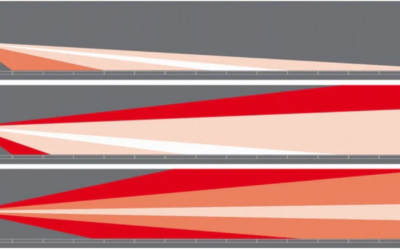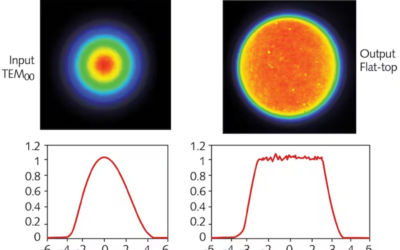In the last month, I have had the need to travel several times by airplane. So, after several hours enjoying $15 sodas, and $30 hamburgers at the airport gates, I started paying more attention to the different illumination systems that are being used in the aviation industry.
On one hand there are the illumination systems inside the terminals that can be a combination of natural light and artificial sources where the architects need to plan depending on the location of the airport. On the other hand we have exterior lighting that needs to be visible under different weather conditions, needs to be mechanically robust to stand vibrations, and be able to stand a big range of air pressure.
In the next couple of articles we will talk about the latter light sources. Starting with this entry to analyze the design requirement for lighting at the runaways.
Types of Lighting
NOTE: The information shown in this article was obtained by the FAA’s Advisory Circular (AC) 150/5340-30J, although this AC is not mandatory, it is required for all projects funded with federal monies.
Visual aids are necessary to provide guidance to pilots while operating on airports. These aids may consist of single units or complex systems composed of many parts. One important aspect is that some airports may use LED sources, or incandescent sources, but never both. If an incandescent source fails and needs to be replaced it will have to be replaced with exactly the same kind that failed. The reason is that LEDs and incandescent sources may provide different hues of color and different distances and thus creating confusions on the pilots.
Among the different kinds of signaling needed at a runaway are:
Runway Edge Lights are omnidirectional and positioned along or just beyond the margins of the area designated for use as a runway as specified by edge markings. They are white with some exceptions. The defined area may or may not be the full width of the paved runway surface.
Runway End Lights are located along the runway’s end and are available for use. They are red and only visible when the runway is in operation.
In cases of low visibility, additional lighting may be used:
Runway Exit taxiways may be indicated by substitution of one or two of the white runway edge lights with blue ones.
Stopway Lighting can be used to indicate the length of a stopway beyond the runway’s official end. At intervals until a further transverse line indicates the end of the stopway, red unidirectional edge lights visible only in the direction of runway use are supplied.
Touchdown Zone (TDZ) lighting must be placed on runways that can be used in low visibility circumstances to improve touchdown area identification. Lighting must extend from the landing threshold for 900 meters or to the runway’s midpoint, whichever is shorter.

Figure 1. Runway Lighting. Different colors and configurations are used to communicate with the pilots. Figure from https://solutions4ga.com/
A set of very interesting light sources are what are called Precision Approach Path Indicator (PAPI). This is a set of four light sources that help the pilots correct the aircraft during touchdown. You can see the PAPI system in figure 1, as four red lights on the left side of the tarmac, close to the horizon. PAPI light sources can be either white or red. If an airplane is too low, the PAPI system will show four red lights (as in figure 1), if the aircraft is too high all four lights will be white. So, a combination of red and white lights can help the pilots correct their landing approach.

Figure 2. PAPI lightning system. Figure from https://solutions4ga.com/
Light Intensity
The intensities are set to fit local conditions, usually by the air navigation service provider. If the intensity of an aspect (or multiple elements) of the system is judged to be inappropriate for the flight operation, the pilot may request that it be modified. The need for daytime guiding in low visibility situations defines the performance specification of high intensity lighting; the greatest intensity levels are typically used in these conditions. At night, lower intensities are typically used.
There is a lot of information on this topic. In our next entry we will talk about the specifics about the optical design of one of the light systems, but I thought it was important to spend some time trying to understand their different uses





